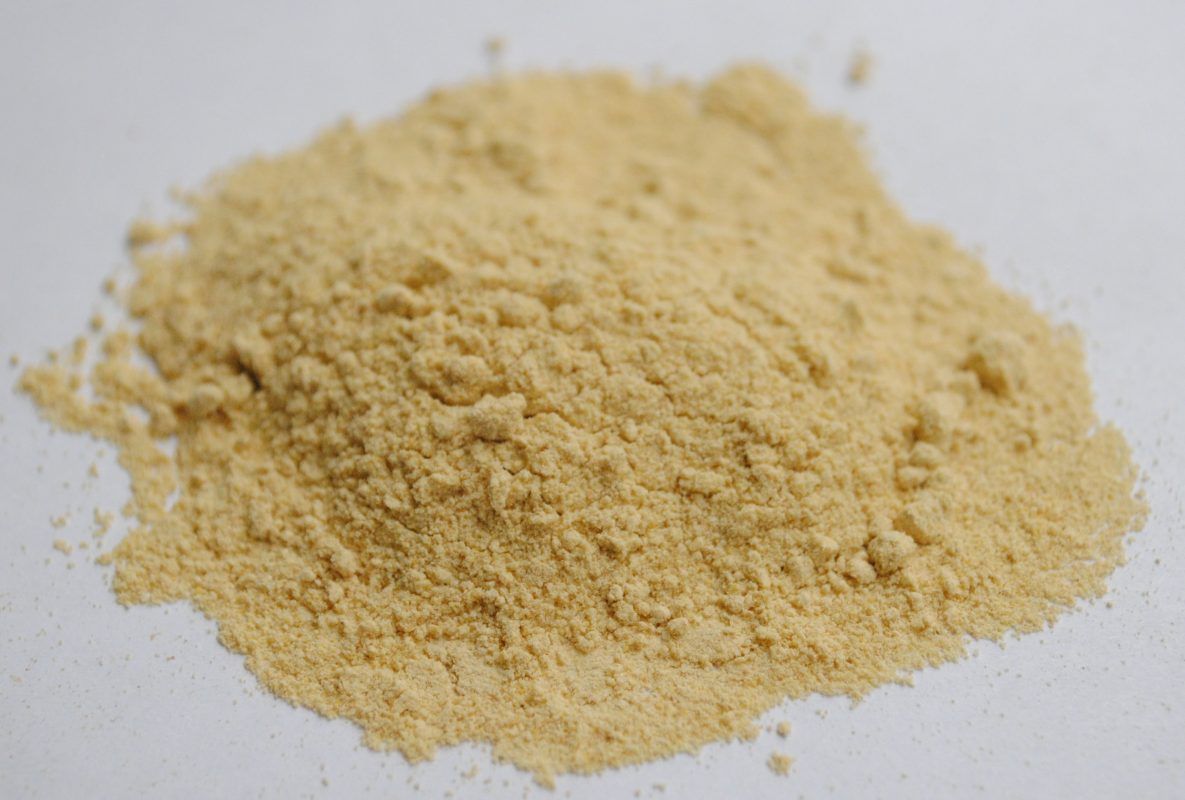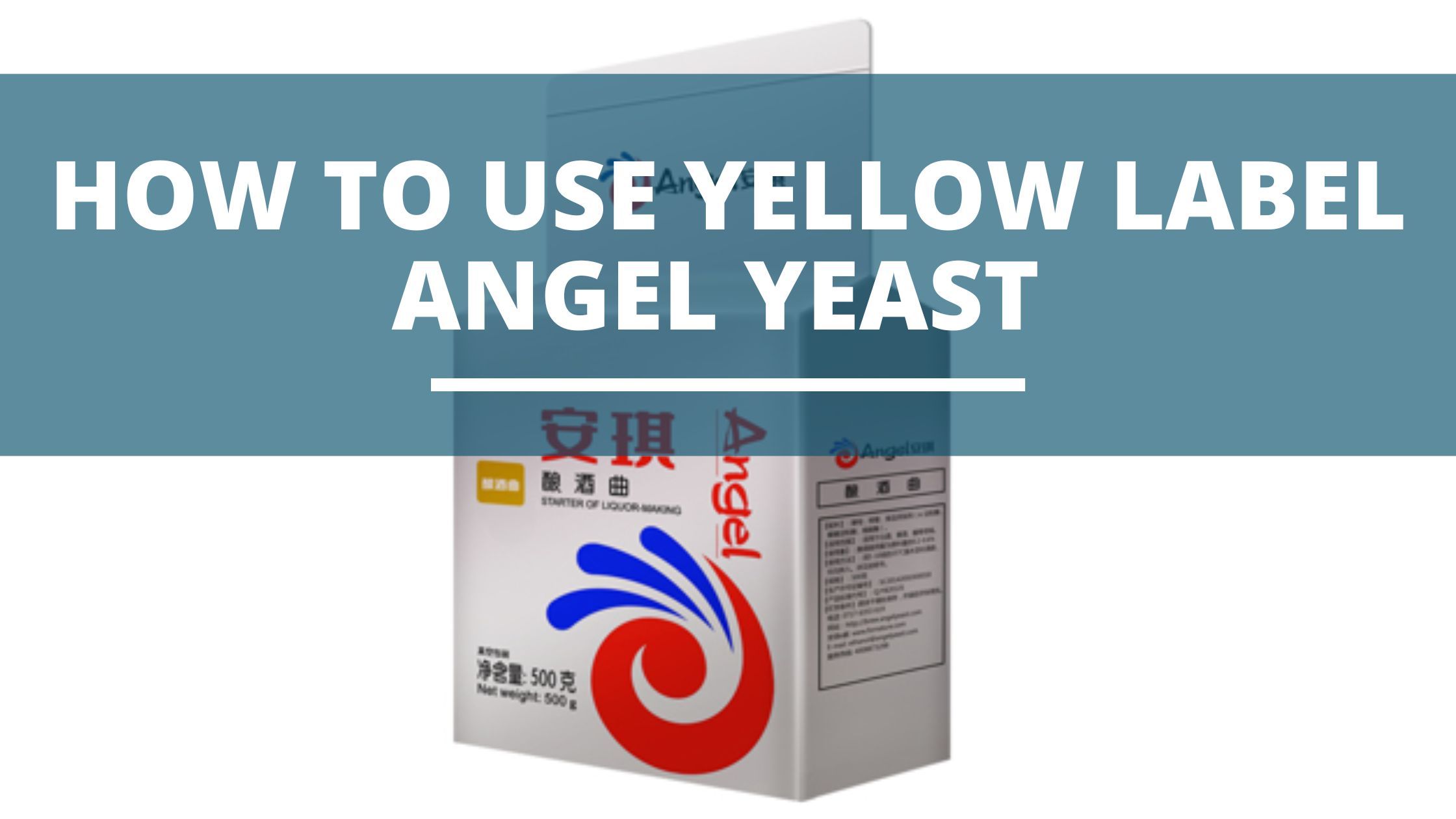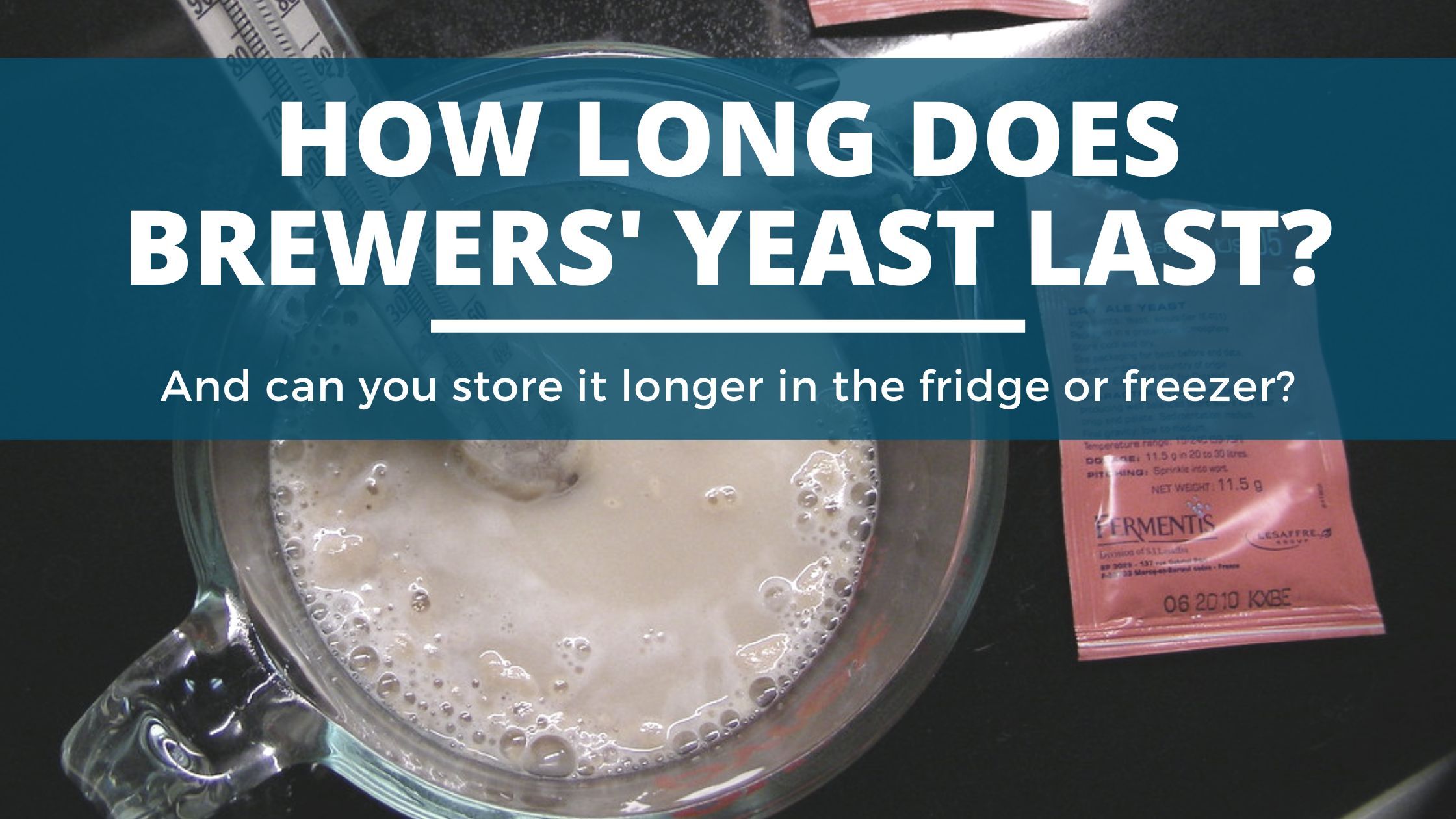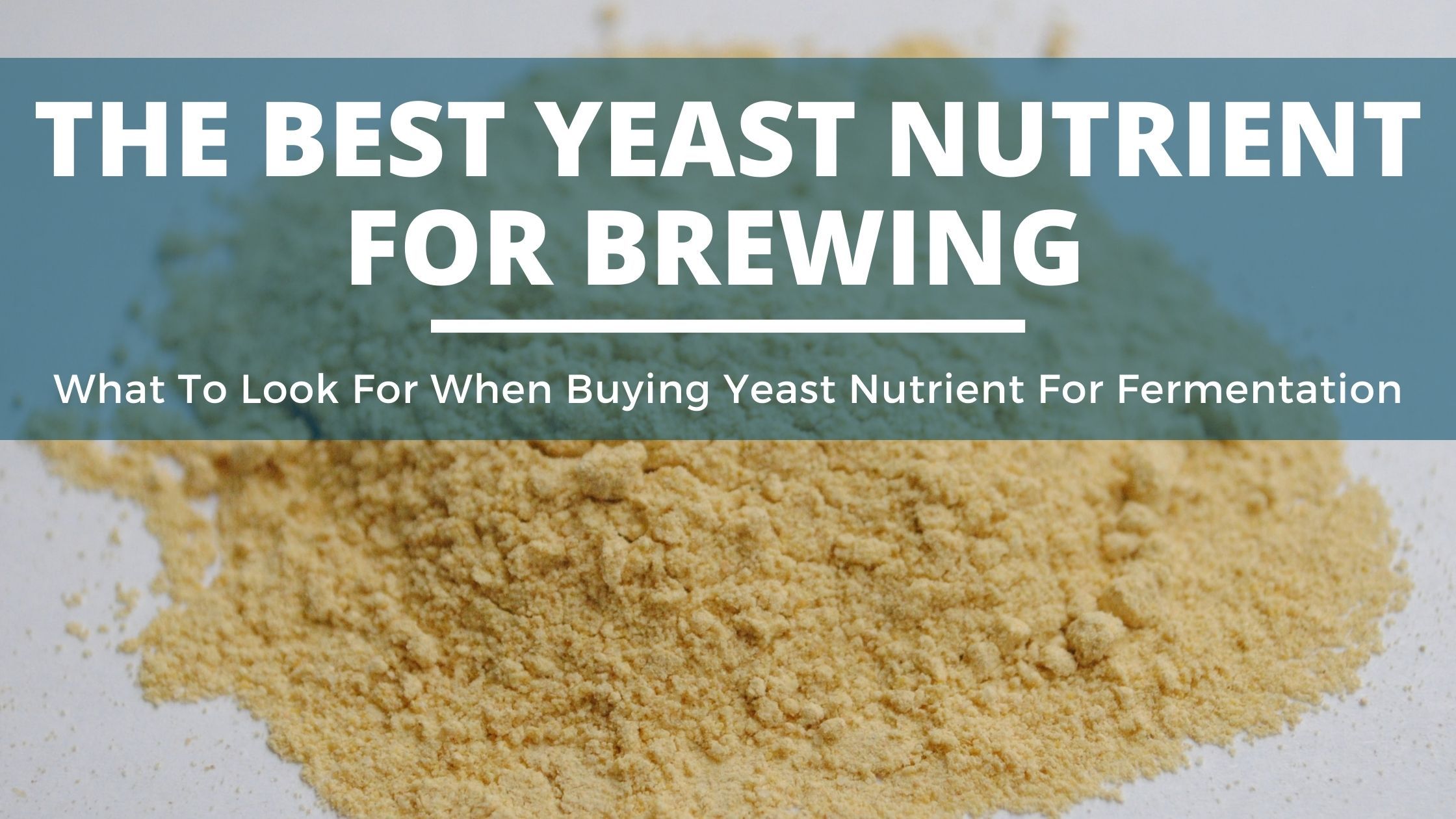Ingredients, Yeast
The Best Yeast Nutrient For Homebrewing and Distilling (Updated For 2023)
Yeast nutrients may not be a strange topic for you if you’ve been into brewing for some time. It is a popular ingredient in numerous wine formulas.
What precisely is a yeast nutrient, why is it needed and when should it be used?
This post will provide answers to these questions and also highlight how to make your yeast nutrients, list the best store-bought products, and address frequently asked questions on yeast nutrients.
Table of Contents
What is yeast nutrient and why should you use it?
Yeast nutrients are composed of ammonium phosphate, amino acids, vitamins, and minerals in a precise ratio. Comparable to a multivitamin for yeast, it ensures that the yeast has everything necessary to ferment your beer, wine, cider, etc.
“Yeast nutrient” is an umbrella word for the complex mixture of trace elements, minerals, and vitamins that are vital for the growth and function of yeast cells but cannot be synthesized by the cells themselves – these compounds must be provided by the environment. Copper, magnesium, phosphate, and zinc, to mention a few, are necessary for the optimal metabolism of cells.
Insufficiencies in the availability of these nutrients might result in subpar fermentation and undesirable quantities of congeners (especially sulfur compounds).
Barley malt or entire fruits that have been gathered in an excellent growing season will provide enough nutrients to ensure a successful fermentation. It is, however, possible that yeast cells may suffer during fermentation in a mash that does not contain malt or fruit; or if the intrinsic micronutrients of malt or fruit are depleted by a considerable portion of unmalted grains or simple sugars. A poor crop’s malt or fruit will also have less nutritional value than ideal.

What nutrients does yeast need?
Yeast, like humans, may benefit from nutritional supplements. They may be able to get by just fine on their own. However, the right combination of nutrients can help the yeast perform at its best.
Yeast has a fascinating nutritional profile. Inside a yeast cell, several chemical reactions are going on. Enzymes speed up these chemical reactions, and each enzyme requires specific minerals to work at its best.
These chemical reactions make alcohol, compounds that add flavor, energy for growth, and so on. If any of these reactions go awry, it can hurt the health of the yeast and how well it ferments, which may impact the flavor negatively.
Yeast requires a sufficient amount of sugar to act upon. They require amino acids to construct proteins and ultimately new cells, micronutrients to speed up enzymatic processes, and phosphorus to produce new DNA.
There are several options when it comes to supplying nutrients to a yeast population.
Store-bought yeast nutrients
Yeast nutrients can be purchased at stores like ready-made products. This is less stressful to use as the ingredients are already premixed in appropriate proportions and you have the option of selecting the product you want, based on its contents.
Diammonium phosphate, abbreviated DAP, is a common yeast nutrient used in brewing and winemaking. DAP is an important nitrogen source for mashes/washes that have high sugar and low malt content.
Diammonium phosphate is an inorganic nutrient source. 1 gram (0.3 oz) DAP in a liter (1.06 qt) of must yields 210 ppm YAN (Yeast Assimilable Nitrogen).
Generally, you can use DAP at a range of 0.4 to 0.8 g/gallon of must. This range may vary depending on your yeast requirements.
A concoction of regular household products
Yes. People have tried several homemade mixtures for yeast nutrients. One notable mixture is a combination of citric acid, Epsom salt, DAP, and vitamin B12. Some people add tomato paste to their homemade concoction. Calcium found in tomato paste supports cell metabolism while Epsom salt has a rich magnesium content that reduces yeast cell stress.
How to use yeast nutrients in your brew
If a yeast nutrient is listed in the recipe’s ingredients, it is almost always preferable to use it. Otherwise, adding nutrient yeast may depend on what you are brewing.
Because wort for beer is made with nutrient-rich components like malted barley, the yeast in the brew gets most of the nutrients it requires. The addition of yeast nutrients here may be unnecessary.
On the other hand, household winemakers and mead makers need additional yeast nutrients because their ingredients aren’t as nutrient-dense as malted barley and wheat.
Tip 1: Adding yeast nutrients
Pour some warm water into an appropriate-sized container. After that, add the nutrients and stir until they are completely dissolved. Pour the solution into the wort and stir thoroughly.
Tip 2: Timing
Typically, yeast nutrients are added at the beginning of the fermentation process. Some skilled winemakers divide yeast nutrient additions into two or three additions, one before fermentation and another once fermentation has begun. This may be vital when brewing a large quantity of wine.
If you are using commercial yeast nutrients, you need to read the package and follow the recommendations of the producer.
Tip 3: Optimal Temperature
Temperature is a crucial consideration when brewing with yeast nutrients. Adding yeast nutrients during fermentation at a temperature of 65-67°F is good brewing practice. This temperature range is favorable for yeast metabolism and growth.
How to make your own yeast nutrient at home (the best blend)
You can make your homemade yeast nutrient blend as it removes some unpredictable variables. You know what proportions to use every time. You can predict the outcome in terms of flavor, aroma, and appearance.
If you wish to create your yeast nutrients, the following formula will yield a strong mixture of about 800g of yeast nutrients:
- 40g of Di-Ammonium Phosphate
- 747g of Ammonium Sulphate
- 2g of Thiamine
- 1g of Potassium Tartrate
- 10g of Bentonite
You can use this homemade blend of yeast nutrients by adding 3 to 5 grams to 20 liters of fermentation.
The best store-bought yeast nutrient (In 2023)
There are so many different products being sold as yeast nutrients, we thought it would be confusing to list them all here. instead, here is what we would buy, based on budget and a few other considerations. let’s take a look at these in some more detail.
Best Overall: Fermaid k
Fermaid K is a yeast nutrient that may be used for both starters and primary fermentation.
Fermaid K contains several active compounds including:
- Ammonia salts (DAP)
- Alpha-amino nitrogen, sterols
- Unsaturated fatty acids
- Inactive yeast cells
- Key micronutrients
- Magnesium sulfate
- Thiamin
- Folic acid
- Niacin
- Biotin
- Calcium pantothenate
Usage: 1 gram per gallon.
Price: $5.99 for 80g
Pros:
- Fermaid K’s cell wall sections of yeast hulls absorb medium-chain fatty acids that are harmful to yeast.
- These cell walls also serve as nucleation sites, which aid in the suspension of the yeast.
- When using Fermaid K, no extra fertilizers or DAP are required.
- Pantothenic acid inhibits hydrogen sulfide production.
Cons:
- Carbon dioxide emission is a risk if Fermaid K is not properly hydrated before adding to active fermentation.
- Provides inorganic nitrogen source
Runner Up: Fermaid O
Fermaid O is an improved composition of the time-tested nutrient Fermaid K that substitutes the inorganic DAP present in Fermaid K with an organic nitrogen source.
Usage: 1.5 grams per gallon of wort
Price: $17.44 for 120g
Pros
- Organic Nitrogen is simpler for yeast to consume, and results in a smoother, more uniform fermentation.
- Using this yeast nutrient reduces marked temperature variability and minimizes the potentially harmful effects of heat.
- Fermaid O yields lower levels of off-flavors and sulfur compounds.
- The product can be certified ‘Organic’
Cons
- The bag is not resealable
- Generally, slower than DAP containing alternatives like Fermaid K and Fermax.
- Package Dimensions: 5.69 L x 0.81 H x 5.44 W (inches)
Best Value For Money: Fermax yeast nutrient
Fermax yeast supplement includes a balanced combination of amino acids and other micronutrients to enhance yeast metabolism during fermentation.
The composition of Fermax is 40% Dipotassium Phosphate, 40% Diammonium Phosphate, 10% Yeastade (autolyzed powdered yeast), and 10% Magnesium Sulfate. The percentage of organic sources of YAN is 10%.
Usage: Add 1 teaspoon per gallon before fermentation begins.
Price: $12.9 for 1lb
Pros
- Improved attenuation
- Cheap source of DAP
- Comes in bulk 1lb bags – great value!
Cons
- Reported to produce some off flavors
- Fewer micro-nutrients than in Fermaid products
- Less transparent about the ingredients list
- Sometimes the product does not come in resealable bags as described by the manufacturer.
Frequently Asked Questions
Q. Do you need yeast nutrients?
Although yeast nutrients are not always required, using them will not harm your brew.
Nutrients are unlikely to be required for beers of average gravity. However, a pinch or two won’t hurt. Higher gravity beers may require some nutrients to help the yeast consume all of the sugars present.
Q. Can you use too much yeast nutrient?
You can use too much yeast nutrition, but this is unlikely. Even if you go a little over or under the prescribed quantity, you will be alright as long as you adhere to the instructions.
If you use too much nutrition, your yeast may not be able to expel it all, resulting in an off-tasting end product. If you supply insufficient nutrients, your yeast may not be able to complete fermentation.
Q. Is DAP a good yeast nutrient?
Yes. DAP (diammonium phosphate) is an effective nitrogen source for yeast. The additional nitrogen will assist the yeast in remaining metabolically active during the fermentation process.
Q. Do yeast nutrients speed up fermentation?
Yeast nutrients guarantee that your yeast carries out its intended purpose, but it does not speed it up. If you want to speed up the fermentation process, try raising the fermentation temperature.
Q. What’s the difference between Fermaid O, and Fermaid K.
The main difference between Fermaid O and Fermaid K is how they get their nitrogen. Fermaid K user Diammonium Phosphate (DAP) as the nitrogen source, while Fermail O used autolyzed yeast cells – that is, old yeast cells that have been split open to provide food for the live yeast.
If you want to make a product that is truly organic and do not want to use DAP in the process, then Fermaid O is the way to go.
Q. What is the difference between yeast nutrients and yeast energizers?
Yeast Energizers are different from yeast nutrients because, in addition to diammonium phosphate, they also contain vitamins, yeast hulls, magnesium, and tricalcium phosphate.
Yeast energizers are especially good at getting a stuck fermentation going again because they enable yeast populations to grow in a brew that may have run out of nutrients because of a previous yeast proliferation.
Q. Can you add yeast nutrients during fermentation?
The optimal time to add yeast nutrients is during the boil or primary fermentation. Secondary fermentation generally does not require the addition of yeast nutrients. By then, your beer will be largely finished fermenting, and adding more nutrients at this point will either leave it with an off-flavor or cause it to continue fermenting after bottling.
-
Yellow Label Angel Yeast (A Distiller’s Guide To Angel Leaven)

Finding a suitable yeast can be a daunting task, as it can make or break a spirit’s flavor profile. That’s where yellow label Angel yeast comes in. This unique blend of fungi and enzymes is a popular choice amongst distillers because it has high alcohol tolerance and can produce a smooth spirit that allows other{…}
-
Double Pitching Yeast (And Co-Pitching Explained)
Double pitching and co-pitching are two different techniques to alter the fermentation process of your beer, wine, or spirit wash. Double pitching involves adding more of the same yeast, while co-pitching is where two different yeast are mixed together to get a particular flavor, aroma, or fermentation characteristic. Both are somewhat controversial topics in the{…}
-
The Best Yeast for Distilling Brandy, Schnapps and Pisco (Our 5 Top Picks!)

With more than 1500 varieties of yeast available to choose from, knowing the right type to use when making brandy, schnapps or any other fruit spirit can be confusing. And, because any type of yeast *can* be used, there is no bad or good option. It all depends on your taste, preference, and budget. However,{…}
-
How Long Does Brewers Yeast Last? (Throw It Out!)

Brewers’ and distillers’ yeast play a key role in turning the sugars found in fruit, vegetables, and grain into alcohol. But, like everything in science (and nature), it has an expiration date. So, if you want to know how long brewers’ yeast lasts, carry on reading to find out! Here is a rough guide to{…}
-
How To Use Turbo Yeast (Step by Step)

Turbo yeast has made fermenting a high-ABV wash fast and easy. It works by using high alcohol tolerant strains of yeast and a concoction of potent yeast nutrients. These sachets can be incredibly efficient, but also lead to producing some nasty flavors and overall a poor quality product. In this article, we’ll explain how to{…}
-
The Best Yeasts For Distilling (Our Top 4!)

There are currently over 1500 varieties of yeast available to choose from. But yeast is yeast, right? Well while they may all seem similar enough, there are plenty of differences you should be aware of. Some yeast types perform better than others based on the ingredients you’re fermenting. Others impart unique flavors that are critical{…}











